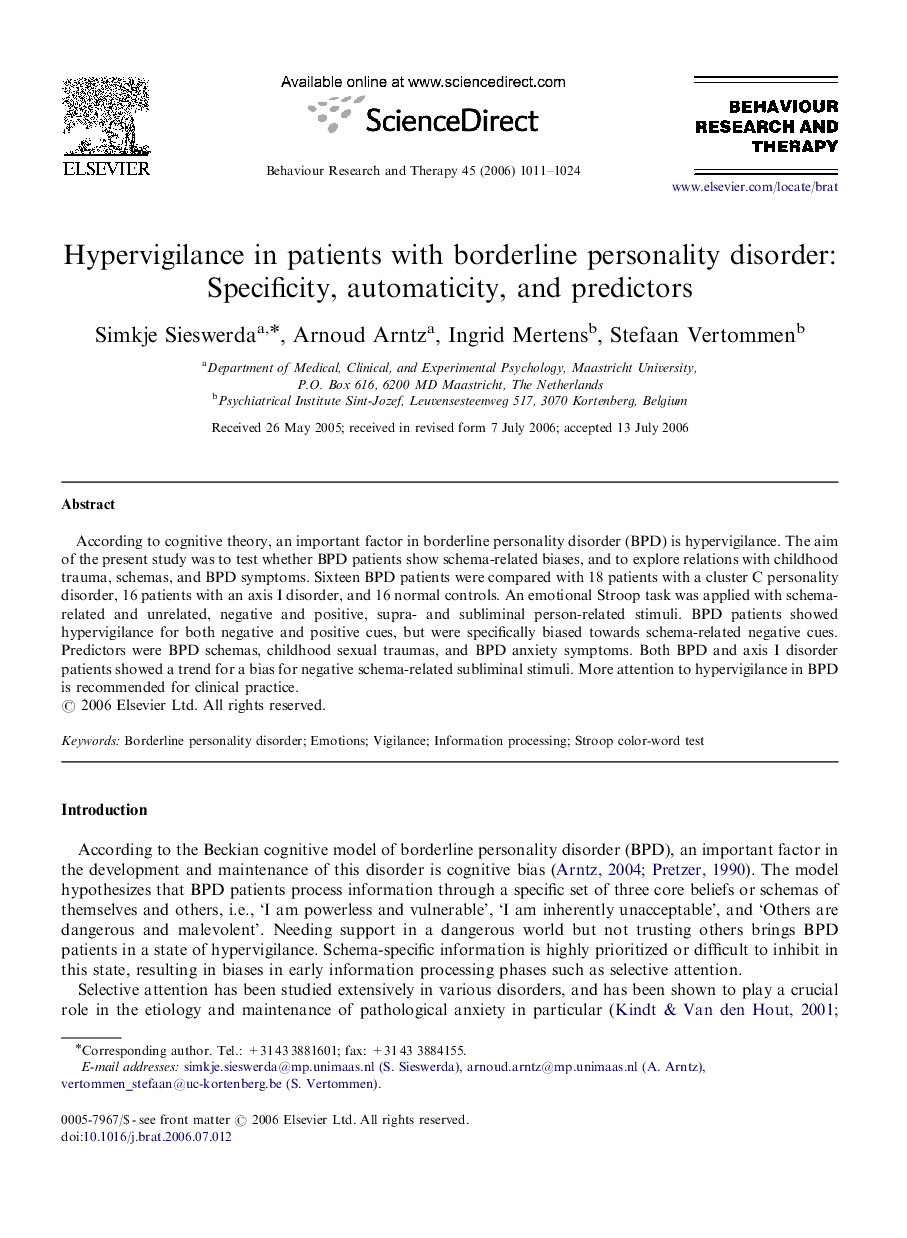| Article ID | Journal | Published Year | Pages | File Type |
|---|---|---|---|---|
| 902340 | Behaviour Research and Therapy | 2007 | 14 Pages |
According to cognitive theory, an important factor in borderline personality disorder (BPD) is hypervigilance. The aim of the present study was to test whether BPD patients show schema-related biases, and to explore relations with childhood trauma, schemas, and BPD symptoms. Sixteen BPD patients were compared with 18 patients with a cluster C personality disorder, 16 patients with an axis I disorder, and 16 normal controls. An emotional Stroop task was applied with schema-related and unrelated, negative and positive, supra- and subliminal person-related stimuli. BPD patients showed hypervigilance for both negative and positive cues, but were specifically biased towards schema-related negative cues. Predictors were BPD schemas, childhood sexual traumas, and BPD anxiety symptoms. Both BPD and axis I disorder patients showed a trend for a bias for negative schema-related subliminal stimuli. More attention to hypervigilance in BPD is recommended for clinical practice.
